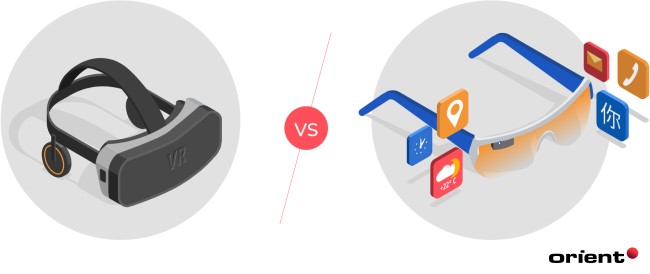
Virtual Vs. Augmented Reality: What is the Difference?
We are on the cusp of a new era in technology, where virtual reality (VR) and augmented reality (AR) are becoming more prevalent. These new realities allow users to experience digital environments and interact with them in ways that were once impossible. As developers continue to research and create new and innovative methods to use VR and AR, we can only imagine the possibilities that will be made available to us. So far, both VR and AR have been used for gaming and entertainment purposes, but there is no limit to what these two technologies can do.
However, augmented reality and virtual reality are frequently mixed up due to their similarities. Thus, we are going to delve into the definitions of each and look at how they differ to help you better understand these technologies and avoid misconceptions.
How Does Virtual Reality Work?
To create a virtual reality experience, the user wears a virtual reality headset that displays images on screens in front of their eyes. These screens create the illusion of depth so that the user feels like they are actually in the computer-generated world. Virtual reality headsets can also track the user’s movement so that they can move around in the virtual world. This adds to the sense of immersion, making it feel like you are really there.
Some virtual reality headsets include sensors that can track the user’s heart rate and other biometric data. This can be used to create a more immersive experience by adjusting the environment based on the user’s emotional state. VR technology is still in its early stage of development, but it is quickly evolving and becoming more sophisticated. It is likely that virtual reality can play a bigger role in our lives in the future.
Augmented reality, or simply AR, is an interactive experience of a real-world environment where the objects residing in the physical world are augmented by computer-generated perceptual information. In other words, AR technologies enhance one’s current perception of reality by adding virtual objects to it. AR has much potential to change how we interact with both our digital and physical worlds.
Augmented reality adds an artificial layer to the real world. This layer can be interactive or non-interactive, and it is usually displayed using a head-mounted display (HMD). While augmented reality was originally used for military purposes, it is now commonly used in entertainment, education, and business. One of the most typical examples of AR apps is Pokémon GO.
AR and VR vs. MR – A Brief Distinction
Not only are AR and VR mixed up for each other but sometimes also mistaken with mixed reality (MR).
So, What Is Mixed Reality?
Mixed reality or MR is an environment that seamlessly blends the real world with the virtual world. MR allows users to interact with virtual objects in the same way that they would interact with real-world objects. This means that users can touch, pick up, and move virtual objects around the same way they would do with real-world objects. MR is also known as hybrid reality or merged reality.
How Mixed Reality Differs from VR and AR
It is important to note that AR, VR, and mixed reality are all different technologies. VR provides an entirely virtual environment, while AR augments the real world with virtual elements. MR is a combination of the two technologies, and it allows users to interact with both the real and virtual worlds simultaneously. Mixed reality typically has a higher resolution than AR because it requires that digital elements be inserted into the user’s real-world view. Mixed reality headsets are also more expensive than AR headsets.
This content was originally published here.

